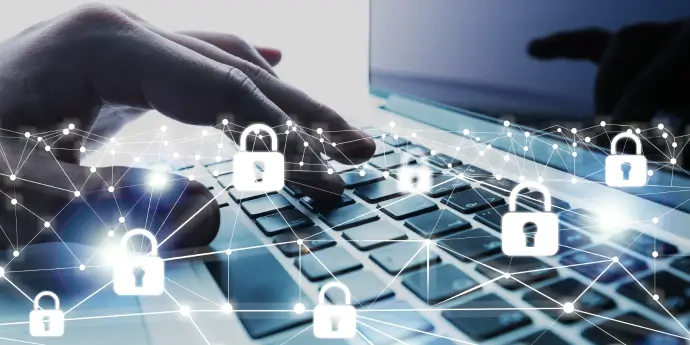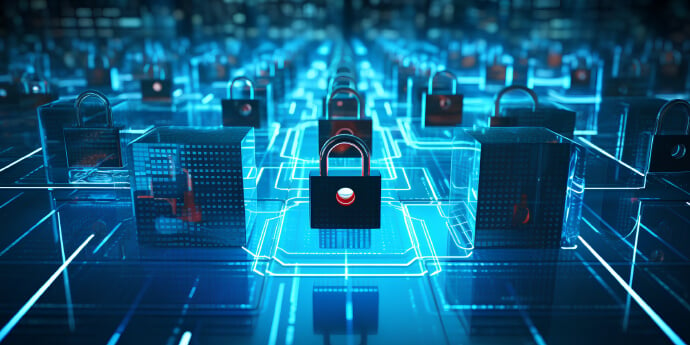
Getting board buy-in for cyber security by engaging each stakeholder
Discover how to improve the way you pitch to get cyber security buy-in from the board and C-Suite.…




Harvina Bains
Security Blogger
4th January 2024
As a cyber security professional, you are likely facing the pressure. Cyber threats are constantly evolving. You are working longer hours to protect your organisation. You are also taking on more responsibility. This has led to an epidemic of burnout within the industry. Currently, 30% of information security professionals are facing burnout.
The volume of threats organisations face is overwhelming security teams. In the past year businesses face, on average, 30 major security incidents – a 25% increase from 2022. But 30 incidents over a year doesn’t sound a lot, right? Well, it’s not just about that figure. Indicators of these incidents will be hidden amongst thousands, if not millions, of alerts, logs and other data points. Cyber professionals must be attentive and prepared at all times. They need skills, knowledge, and resources to handle incidents. They also need these to identify them quickly.
This constant state of high stress has serious consequences. These can include increased risk of illness, poor decision making, and high turnover rates.
While challenges are present, there are ways to mitigate burnout and build resilience. Let’s explore the reasons why burnout rates are so high in the cyber profession. We’ll also look at the consequences. Finally, I’ll share five ways you can help your team perform their best.
Security teams trying to protect their organisations are overwhelmed. They have limited budgets and experienced staff. A recent survey underscored this problem. It showed that 27% of companies admit their security budgets are too constrained. They aren't able to support their teams.
Businesses often default to pointing fingers at security teams to assign personal responsibility, rather than thoroughly investigating breaches to uncover process gaps or inadequate controls. This punishes well-intentioned professionals who are trying their best with limited resources. It fosters a culture of fear about making mistakes. It doesn't encourage openness to continuously improve security posture. Surveys show 88% of professionals believe this blame culture exists. This erodes morale and increases stress.
Security tools can generate a high volume of alerts and warnings. This overwhelms professionals and leads to alert fatigue. The flood of notifications creates a signal-to-noise problem where important threats can get lost in the overflow.
Too many security tools and controls lack standardisation and integration. Organisations often adopt cyber security solutions from multiple vendors. Too often, these technologies don’t follow common standards. They also don’t communicate with each other. This complexity forces additional work. Professionals must manually connect the dots, which can create significant strain.
As exhaustion sets in, concentration and task efficiency decline. You may spend long periods staring blankly at screens. You may be unable to process the information shown. Or you may hurry through tasks carelessly. This can lead to errors, which then require time-consuming correction. Output slows as you struggle to maintain focus. The quality of your work is likely to suffer as well, with key details being missed or overlooked. An organisation relies on its cyber security team's technical skills. They use these skills to detect and rapidly respond to threats. A drop in productivity directly impacts their ability to identify and contain attacks. Threats can go unnoticed for longer and reaction times slow. This expands the window of opportunity for hackers.
Mental fatigue from burnout impairs judgement and critical thinking skills. You may miss obvious warning signs. Or you may make overly risky decisions without carefully weighing all alternatives. For security professionals tasked with out-thinking and out-manoeuvring sophisticated cyber criminals, this type of blurred thinking can spell disaster. Impaired cognitive abilities may cause a lack of alertness and strategic thinking.
High turnover is a consequence organisations face when staff experience chronic burnout. Mentally exhausted employees are more likely to seek relief by finding a new job. With over 11,200 cyber security jobs unfilled just in the UK, replacing and retraining security hires is an immense challenge. This pressure also means that less than half of companies feel confident they can handle major threats like phishing (56%) and malware (55%).
The talent shortage means a steep learning curve for underqualified new hires, and risks heighten as the new team gets up to speed. Departing staff also take with them valuable knowledge that is difficult to replace. A revolving door of burned out and dissatisfied employees creates instability. It makes it extremely difficult to build an effective and cohesive security team in today’s landscape of scarce cyber talent.
Promoting the well-being of security staff through workload management, increased staffing, appropriate tools, and a positive culture focused on sustainability prevents depleted defences over the long-haul.
Here are five ways you can ensure your team remains engaged, revitalised, and performing at their best:
Much of the fatigue in cyber security arises from repetitive manual tasks. Setting and reviewing configurations, analysing logs, and compiling reports become a never-ending cycle. It keeps teams from focusing on strategic initiatives. Automation of security processes can help alleviate burnout. Establishing automated incident responses and scripted playbooks can help remove time-consuming tasks. Employing AI for threat detection can also help.
Let’s be truthful – employees are often the weak link in cyber security. A lack of security savviness can lead to clicking on phishing links, using weak passwords, or mishandling sensitive data. This can cause additional pressures on security personnel. They have to respond to malware infections, breach cleanups, and employee admin such as resetting passwords. Implementing technological controls and corporate policies can reduce user-caused security incidents.
Some of the measures all businesses should take to help protect users include:
Cyber insurance help cover the costs for forensic investigations, system remediation, legal fees, regulatory fines, and lost income, which would otherwise have a significant impact on the security budget and technology investments if a breach were to happen. Investing in cyber insurance can alleviate some pressure an IT team faces in protecting the organisation. However, cyber insurance does not replace the need for strong security controls and practices. In fact, many insurance providers require certain security controls to be met in order to provide coverage.
The widespread misconception that cyber security is solely an IT issue restricts its scope and ignores it’s multifaceted nature, which includes people, process and technology. Cyber security is much more than a technical challenge. It depends on people following good security practices and processes designed to prevent, detect, and respond to threats.
Organisations should foster a security culture across all departments. By empowering employees throughout the organisation to participate in cyber security efforts, the workload is distributed and a more robust defence against evolving threats is created, enhancing resilience and adapting to the continually changing cyber environment. A holistic model makes cyber security everyone’s responsibility. This approach leads to more effective security across the board.
The volume of cyber threats targeting organisations continues to rise. However, most security teams struggle to defend their environments due to limited budgets, staff, and time.
Partnering with a security provider for 24/7 monitoring and response can relieve the burden on overworked in-house security teams. Managed Security Information and Event Management (SIEM) solutions to provide continuous threat detection, alert prioritisation and incident investigation. This helps overburdened in-house teams offload routine tasks allowing a focus on high-value projects that are central to business goals. Strategically collaborating between internal security experts with business knowledge and external analysts with broad threat intelligence allows organisations to maximise capabilities while combatting the rise of cyber threats.
The demanding workload and scarce resources in cyber security have led to high burnout among professionals. Organisations can put in place automation, training, shared responsibility, insurance and partnerships to ease these pressures. Supporting the well-being of security staff is vital for building resilient defences against evolving threats.

Harvina Bains
Security Blogger
Share this article

Discover how to improve the way you pitch to get cyber security buy-in from the board and C-Suite.…

Discover everything you need to know about implementing a secure by design approach.…

Discover how you can reduce the overall impact of a data breach and improve your ability to detect and respond to threats with SIEM technology.…

Cyber insurance premiums are on the rise and policies are offering lower coverage. Learn how you can secure and protect your business.…
Get actionable cyber security advice and insights straight to your inbox.